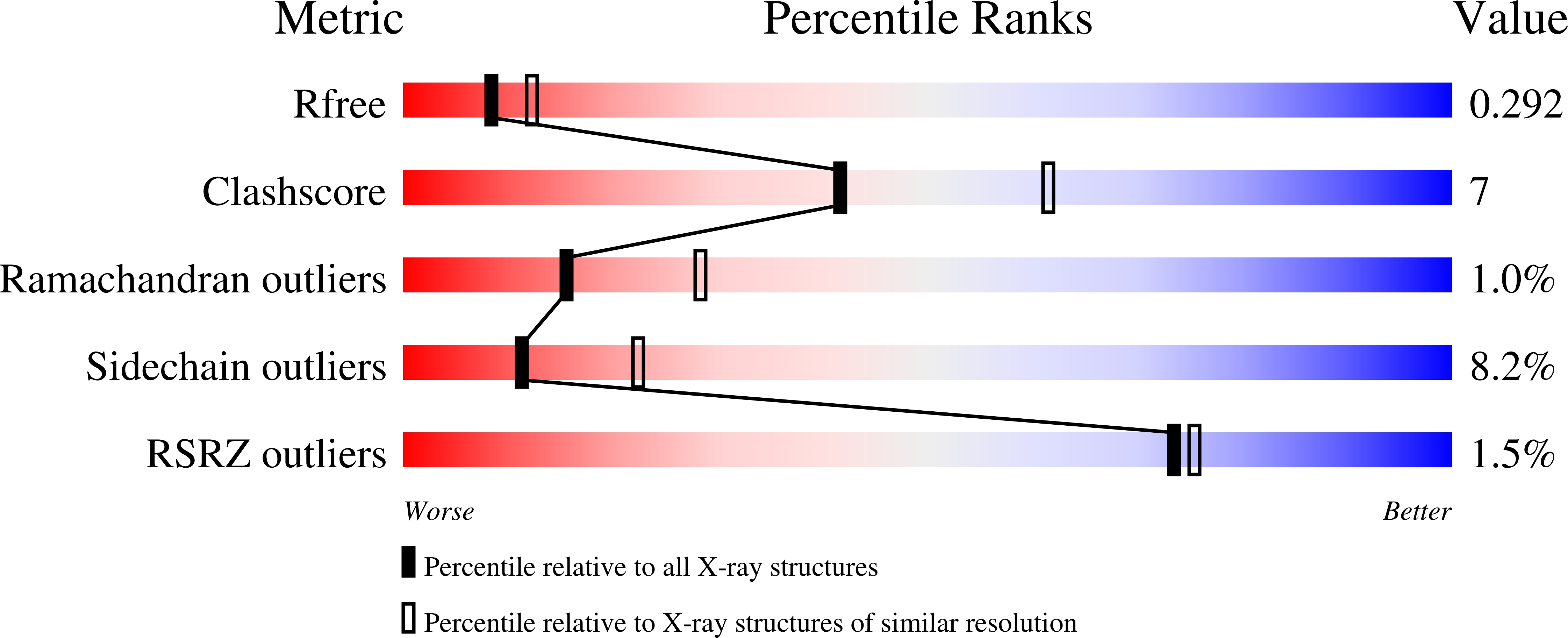Diastereomeric Resolution Yields Highly Potent Inhibitor of SARS-CoV-2 Main Protease.
Cooper, M.S., Zhang, L., Ibrahim, M., Zhang, K., Sun, X., Roske, J., Gohl, M., Bronstrup, M., Cowell, J.K., Sauerhering, L., Becker, S., Vangeel, L., Jochmans, D., Neyts, J., Rox, K., Marsh, G.P., Maple, H.J., Hilgenfeld, R.(2022) J Med Chem 65: 13328-13342
- PubMed: 36179320
- DOI: https://doi.org/10.1021/acs.jmedchem.2c01131
- Primary Citation of Related Structures:
8A4Q, 8A4T - PubMed Abstract:
SARS-CoV-2 is the causative agent behind the COVID-19 pandemic. The main protease (M pro , 3CL pro ) of SARS-CoV-2 is a key enzyme that processes polyproteins translated from the viral RNA. M pro is therefore an attractive target for the design of inhibitors that block viral replication. We report the diastereomeric resolution of the previously designed SARS-CoV-2 M pro α-ketoamide inhibitor 13b . The pure ( S,S,S )-diastereomer, 13b-K , displays an IC 50 of 120 nM against the M pro and EC 50 values of 0.8-3.4 μM for antiviral activity in different cell types. Crystal structures have been elucidated for the M pro complexes with each of the major diastereomers, the active ( S,S,S )-13b ( 13b-K ), and the nearly inactive ( R,S,S )-13b ( 13b-H ); results for the latter reveal a novel binding mode. Pharmacokinetic studies show good levels of 13b-K after inhalative as well as after peroral administration. The active inhibitor ( 13b-K ) is a promising candidate for further development as an antiviral treatment for COVID-19.
Organizational Affiliation:
Bio-Techne (Tocris), The Watkins Building, Atlantic Road, Bristol, BS11 9QD, U.K.
















